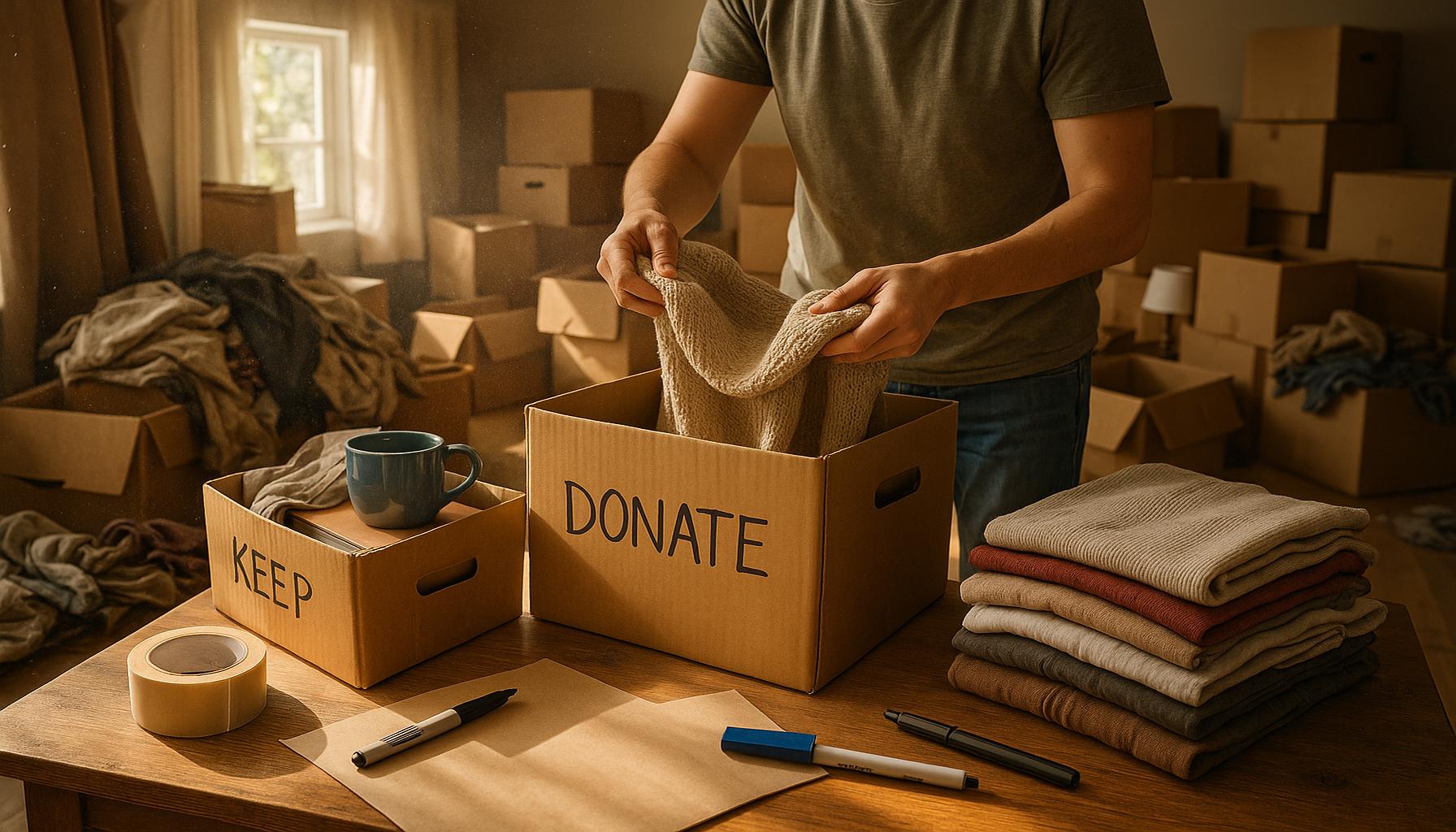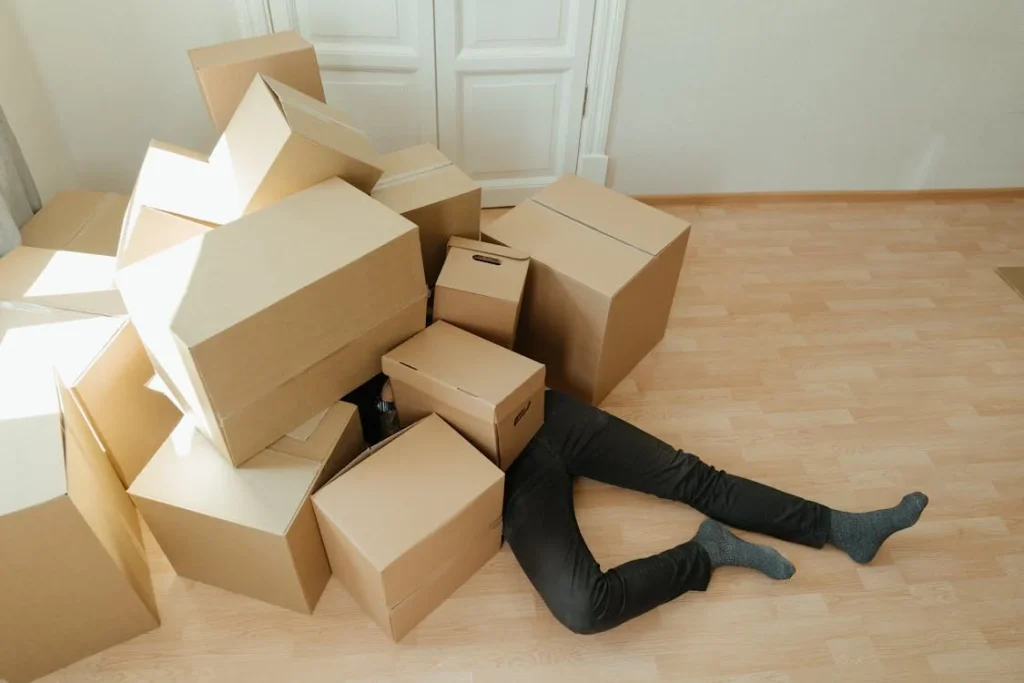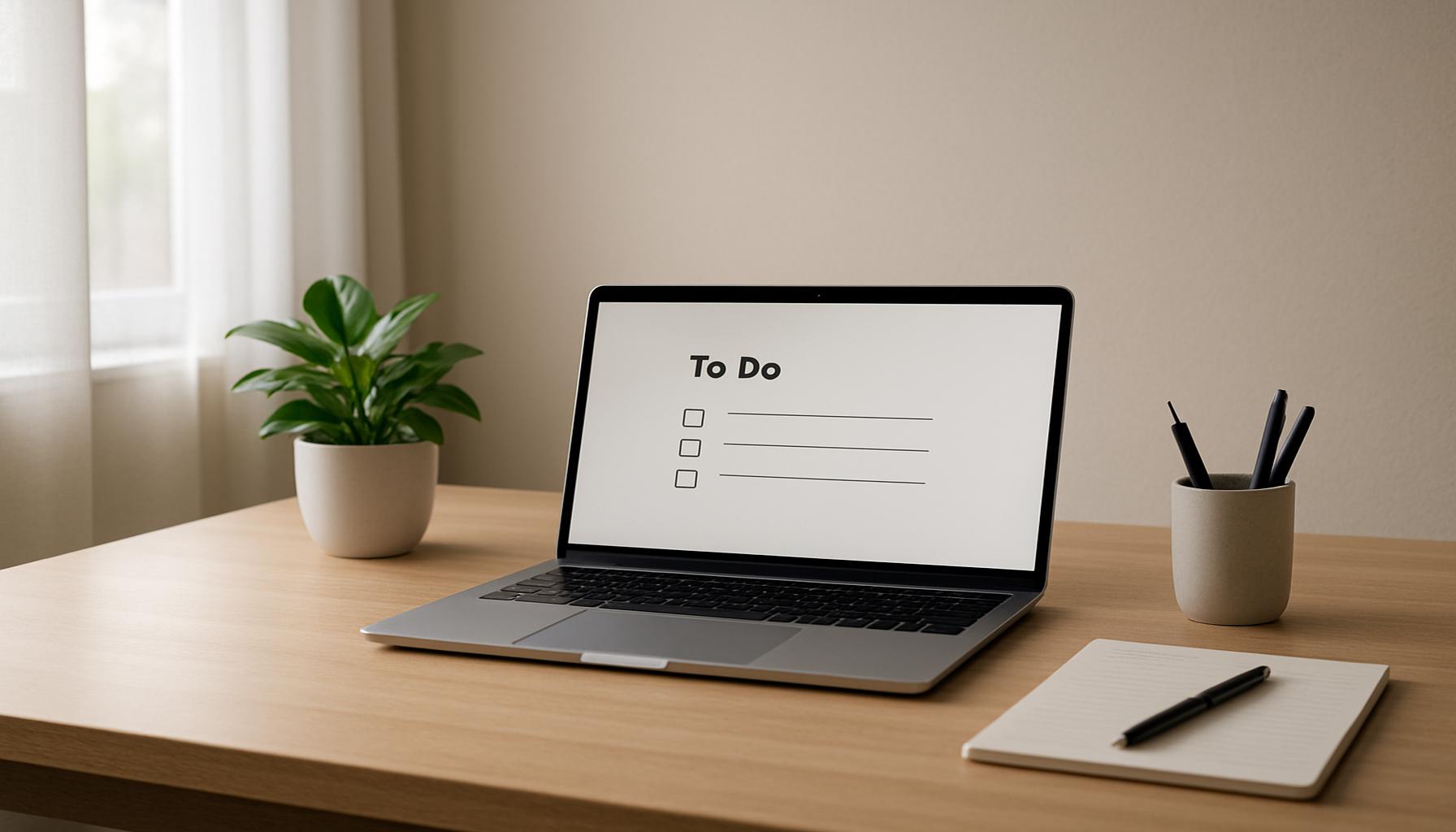The Role of Decluttering in Preparing for Moves: Tips for Organizing and Easing the Transition

Understanding the Importance of Decluttering During a Move
Moving to a new home can certainly stir up a range of emotions, from excitement about new beginnings to anxiety about the logistics involved. Amidst packing boxes and organizing logistics, one often overlooked but critical step is decluttering. This process not only helps streamline your move but also contributes to a more positive emotional transition.
Before diving into the packing process, it’s essential to understand the myriad benefits that decluttering offers:
- Reduces Stress: A cluttered space can lead to a cluttered mind. When you declutter, you create a streamlined environment that helps reduce chaos during an already stressful time. Imagine the clarity of a neat space as you prepare for a move—this mental clarity can significantly ease the packing process.
- Increases Efficiency: Being aware of what you own allows for more strategic packing. You are less likely to waste time searching for items or mistakenly packing things you no longer need. For instance, if you realize that you own multiple coffee mugs or an array of board games you seldom play, you can make informed decisions that help prioritize what to pack.
- Encourages Mindfulness: Decluttering is not merely about getting rid of items. It fosters reflection on what truly matters in your life. As you sort through belongings, you can confront memories tied to possessions and, in doing so, find emotional closure. Each item you choose to keep or discard tells a story, which can be a cathartic experience.
Effective Strategies for Decluttering
To transform decluttering from a daunting task into an empowering activity, consider these actionable strategies:
- Start Early: Begin the decluttering process weeks or even months ahead of your move. This allows you to take your time and reflect on each item without the pressure of an impending deadline.
- Keep, Donate, Toss Approach: Simplify the decision-making process by categorizing belongings into three main categories: items you want to keep, those you would like to donate, and things that should simply be tossed. Local charities, such as Goodwill or Habitat for Humanity, often welcome donations and will help reduce unnecessary clutter.
- Involve the Family: Make decluttering a family activity by encouraging everyone to participate. This not only lightens your load but also helps younger family members learn valuable lessons about organization and the sentiment behind possessions.
By embracing thoughtful organization and decisiveness, the burdens of moving can transform into a powerful opportunity for reflection and growth. Decluttering can pave the way for a smoother transition, enabling you to step into your new home burden-free and ready for a fresh start. Take this chance to not just physically change your surroundings but to also redefine what matters most in your life—ultimately, creating a space that reflects your future aspirations.
DISCOVER MORE: Click here to transform your routine

Transforming Your Space: The Art of Decluttering Before a Move
As the moving date approaches, the excitement of starting anew can be overshadowed by the daunting task of packing up an entire household. However, decluttering serves as a fundamental tool in this transitional phase, making the process smoother and less overwhelming. Engaging in a thorough decluttering effort allows individuals to not only lighten their loads but also to cultivate a sense of introspection and purpose. It’s a unique opportunity to curate a home that resonates with new beginnings, while shedding the unnecessary burdens accumulated over the years.
To pave the way for a successful decluttering session, begin by considering the following key factors:
- Assess Space Limitations: With a new home comes a fresh layout and new space constraints. Take time to evaluate how much space you will truly have in your new environment. By visualizing where your belongings might fit, you are compelled to make practical decisions about what to keep and what to let go.
- Embrace the 80/20 Rule: Often referred to as the Pareto Principle, this rule suggests that we use approximately 20% of our belongings 80% of the time. Analyze your items according to this rule to identify the essential pieces that truly serve your daily life and bring joy. If an item hasn’t been used in months or has lost its appeal, it may be time to consider its fate.
- Implement the One-Year Rule: This popular strategy encourages individuals to assess whether they’ve used or worn an item in the past year. If the answer is ‘no,’ then it’s time to part ways. This tactic takes the emotional weight off decision-making, allowing you to view items more objectively.
With these strategies in mind, the decluttering process can feel invigorating rather than merely a chore. Studies have shown that decluttering can lead to lower stress levels and increased focus, which are crucial during a move. Additionally, it offers a psychological advantage; by making conscious choices about your possessions, you begin to reclaim control over your environment. With each item you decide to keep, donate, or discard, you are actively shaping your new narrative and creating a living space that reflects your evolving identity.
Ultimately, the decluttering phase is not just about preparing for a move; it is about embracing a lifestyle change. By thoughtfully evaluating your belongings, you set the stage for a fresh start, imbued with clarity and intention. This newfound sense of organization can revolutionize the way you approach your new home, allowing you to fully embrace your next adventure without the weight of excess baggage—both physical and emotional.
The Process of Decluttering: Steps to Take Before Your Move
When preparing for a move, the act of decluttering can serve as both a practical necessity and a transformative experience. To begin, you should approach your belongings with a critical eye. Start by categorizing items into three groups: what to keep, what to donate, and what to discard. This method not only simplifies decision-making but also contributes to a less stressful moving process.One effective strategy is the one-year rule: if you haven’t used or needed an item in the past year, it might be time to let it go. This rule can help you identify items that take up valuable space but serve no purpose. Another approach is the Marie Kondo method, which encourages you to keep only those items that “spark joy.” This adds an emotional aspect to decluttering, making the process feel more rewarding.In addition, organizing your belongings as you go not only makes packing easier but also provides a clear overview of what you own. Use boxes, bags, and labels to separate items by category, which can significantly reduce confusion during the move. For instance, having a dedicated box for kitchen items allows you to unpack systematically in your new home, making the transition smoother and more organized.
Tips for Easing the Transition
Once you’ve decluttered, the benefits become evident—not only do you have fewer items to move, but you also create a sense of calm amidst the chaos of moving. It’s easier to focus on what really matters rather than being overwhelmed by excess. Moreover, donating surplus items can have a positive impact on your community, allowing you to leave a legacy of kindness.Incorporating your decluttering process into the overall moving strategy can drastically change your experience. Plan ahead and create a timeline, allowing sufficient time for each stage of decluttering and packing. Consider enlisting help from friends or professional organizers to alleviate the workload. Finally, don’t underestimate the importance of maintaining your sanity throughout the process. Simplifying your belongings can ease the emotional burden of moving, providing clarity in the midst of change. By prioritizing decluttering, you not only streamline your move but also pave the way for a fresh start in your new home.
EXPLORE MORE: Click here to dive deeper
The Psychological Benefits of Decluttering Historically Before a Move
Decluttering before a move is not merely a logistical strategy; it also holds profound psychological benefits that can ease the emotional strain of transitioning into a new home. The act of letting go of physical belongings has the power to catalyze emotional release, fostering a lighter mental state as you embark on your new journey. Studies have demonstrated that clutter can lead to feelings of anxiety, overwhelm, and decreased productivity. Conversely, when you declutter, you create a serene atmosphere that nurtures positive emotions and fresh perspectives.
One effective approach to decluttering involves mindful sorting. This method encourages individuals to engage thoughtfully with their belongings. Instead of hastily tossing items aside, take a moment to reflect on the memories tied to each piece. As you sort through them, ask yourself critical questions: Does this item spark joy? Does it serve a functional purpose? Am I willing to transport this to my new home? This engaging process transforms decluttering from a mundane task into a meaningful ritual, helping to alleviate stress and instilling a sense of accomplishment.
Moreover, incorporating a decluttering timeline can also significantly ease the moving process. By spreading out your decluttering efforts over several weeks or months, you avoid the last-minute panic that often accompanies moving day. Here’s how to create an effective timeline:
- Create a Schedule: Block out time each week dedicated solely to decluttering. Consider dedicating a specific day for each room in your home, allowing for a focused approach. For instance, tackle the living room one weekend and the kitchen the next, systematically reducing your belongings.
- Utilize a Room-by-Room Approach: Rather than confronting your entire home at once, take a methodical room-by-room approach. This enables you to absorb details and confront the emotional attachments tied to different spaces. You’ll be amazed at the hidden treasures you uncover and the profound realizations that often accompany each room’s assessment.
- Involve Friends or Family: Decluttering can be an emotional task, and often, support from friends or family can make this process more enjoyable. Engage them by inviting them over to help you sort through items. Not only will you benefit from their assistance, but they can also offer a fresh perspective on which items are truly valuable to you.
Statistics suggest that almost 30% of people feel anxious about their clutter, leading to a chaotic feeling in the home environment. By instilling a dedicated decluttering routine, you empower yourself to regain control over your space. An organized home not only makes packing and moving easier but also offers a clean slate for your new living environment. Surprisingly, decluttering often yields unexpected benefits, including uncovering items long forgotten and rediscovering passions that spark joy, helping you create an inspiring space from the very start.
In essence, decluttering fosters not just order but an enriching psychological experience. By merging practical strategies with reflective processes, you can enhance your emotional well-being while navigating the complex landscape of moving. These proactive measures not only mitigate the stress traditionally associated with moving but also help you embrace the fresh opportunities that await in your new home.
DISCOVER MORE: Click here to enhance your efficiency
Conclusion
In navigating the intricate process of moving, decluttering stands as an indispensable ally that not only streamlines logistics but also enriches your emotional landscape. The transformative act of sorting through your belongings empowers you to forge a deeper connection with the past while making space for new beginnings. By adopting a mindful approach to decluttering, you can turn what often feels like a daunting chore into a rewarding journey of self-discovery.
Establishing a clear and organized timeline for decluttering not only reduces anxiety but also allows you to tackle the process systematically, ensuring that your moving day is filled with less stress and more serenity. Engaging friends or family during this process not only lightens the physical load but also enhances the emotional experience, creating cherished memories along the way.
As you prepare for your move, remember that the benefits of decluttering extend beyond just the immediate physical space; they encompass emotional well-being and a renewed sense of clarity. Consider that a well-organized home can profoundly influence your daily life, inviting positivity and productivity into your new environment. By embracing the decluttering process, you not only ease the transition into your new residence but also embark on an exciting chapter imbued with potential.
Therefore, as you prepare for your move, let decluttering be a crucial component of your journey—leading to a less chaotic moving experience and laying the groundwork for a harmonious and inspired new home. The act of letting go isn’t just about emptying your space; it’s about making room for new experiences that await you just around the corner.


